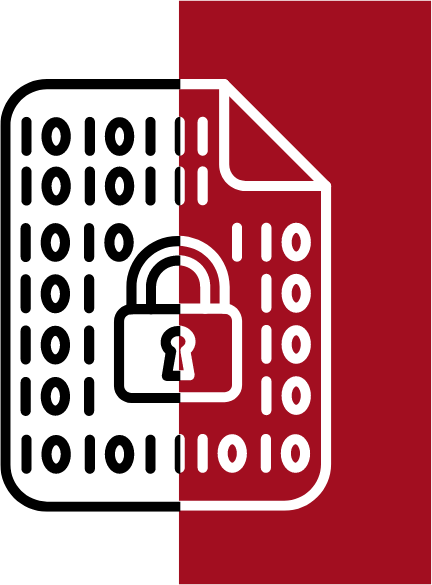
Security and Compliance Guide
Prepared for: {{client_name}}
Prepared by: {{sender_name}}
Introduction

At {{your_company}}, we take security and compliance seriously.
This guide provides an overview of the measures we have in place to protect your data and ensure compliance with industry standards.
Security Features
We employ a range of security features to safeguard your data, including data encryption, access controls, and multi-factor authentication.

Data Encryption
- Description: All data is encrypted in transit and at rest using industry-standard protocols such as AES-256.
- Benefits: Protects sensitive information from unauthorized access and breaches.

Access Controls
- Description: Role-based access controls ensure that only authorized users can access sensitive information.
- Benefits: Minimizes the risk of data breaches by restricting access to critical data.

Multi-Factor Authentication
- Description: Enhance security with multi-factor authentication for all user accounts.
- Benefits: Provides an additional layer of protection by requiring multiple forms of verification.
Compliance Standards
Our product meets several industry compliance standards such as GDPR, HIPAA, and SOC 2, ensuring your data is handled with the highest levels of security and privacy.

GDPR
Description: Our product complies with the General Data Protection Regulation (GDPR), ensuring the protection of personal data.
Requirements: Data processing agreements, data protection officer, and privacy impact assessments.

HIPAA
Description: We adhere to the Health Insurance Portability and Accountability Act (HIPAA) for handling healthcare information.
Requirements: Safeguards for electronic protected health information (ePHI), including encryption and access controls.

SOC 2
Description: Our systems are regularly audited to meet SOC 2 standards for security, availability, and confidentiality.
Requirements: Regular security audits, risk assessments, and incident response plans.
Data Privacy

Our data privacy practices include transparent policies on data collection, usage, and user rights, ensuring your personal information is protected.
- Description: Our comprehensive privacy policy outlines how we collect, use, and protect your data. Read it at {{link}}.
- Key Points: Data collection practices, data usage policies, and user rights.
- Description: You have the right to access, correct, and delete your personal data. Contact our data protection officer at {{email}} for assistance.
- Process: Submit a request through our privacy portal to exercise your data rights.
Incident Response
We have a robust incident response plan in place to quickly address and mitigate any security breaches or issues that may arise.

Incident Reporting
- Description: Report any security incidents immediately to our security team at {{email/phone_number}}.
- Process: Follow our incident reporting procedure to ensure timely and effective response.

Response Plan
- Description: We have a detailed incident response plan in place to address and mitigate any security breaches promptly.
- Steps: Identification, containment, eradication, recovery, and post-incident review.
Regular Audits and Updates

We conduct regular security audits and software updates to maintain the highest level of security and address any vulnerabilities.
Security Audits
- Description: We conduct regular security audits to identify and address potential vulnerabilities.
- Frequency: Quarterly internal audits and annual external audits by third-party experts.
Software Updates
- Description: Our product is regularly updated with security patches and new features. Stay informed about updates at {{link}}.
- How to Update: Updates are automatically applied. You can check for manual updates in the Settings section.
Customer Responsibilities
While we provide robust security measures, it is also essential for customers to follow best practices, such as using strong passwords and regularly reviewing access permissions.
- Use Strong Passwords: Create strong, unique passwords for all user accounts. Avoid using easily guessable passwords such as "password123" or "admin."
- Enable Multi-Factor Authentication (MFA): Enhance security by enabling MFA for an additional layer of protection. This requires users to verify their identity through a second method, such as a mobile device.
- Regularly Update Passwords: Change passwords regularly and avoid reusing old passwords. Set reminders to update passwords every 90 days.
- Educate Your Team: Conduct regular training sessions on security best practices and the importance of data protection. Ensure all team members understand their role in maintaining security.
- Monitor Account Activity: Regularly review account activity logs for any suspicious behavior. Report any unauthorized access or unusual activities immediately.
- Keep Software Updated: Ensure that all software, including antivirus programs and web browsers, is kept up to date with the latest security patches.
- Limit Access Rights: Only grant access to sensitive data to those who need it. Use role-based access controls to enforce the principle of least privilege.
- Do Not Share Login Credentials: Never share your login credentials with anyone. Each user should have their own account and login information.
- Report Suspicious Activities: Immediately report any suspicious activities or security incidents to our support team. Early detection can prevent potential breaches.
- Comply with Data Protection Policies: Adhere to all data protection policies outlined by {{Your Company}}. Ensure that data is handled in accordance with applicable regulations and standards.
- Regularly Review Access Permissions: Periodically review and update user access permissions to ensure that only authorized personnel have access to sensitive information.
- Secure Physical Access: Ensure that devices used to access {{Your Product}} are physically secure. Lock computers when not in use and avoid accessing sensitive data on public or unsecured networks.
- Backup Data: Regularly backup your data to protect against data loss. Store backups securely and ensure they are encrypted.
By following these best practices and guidelines, you contribute significantly to the overall security of your data and our product. Together, we can maintain a secure and compliant environment.
Contact Information

If you need further assistance or have questions, please use the following contact details to reach our support team.
Customer Support
- Phone: {{support_phone_number}}
- Email: {{support_email_address}}
- Hours: Monday to Friday, 9 AM to 5 PM
Technical Support
- Phone: {{technical_support_phone_number}}
- Email: {{technical_support_email_address}}
- Hours: 24/7 for critical issues

